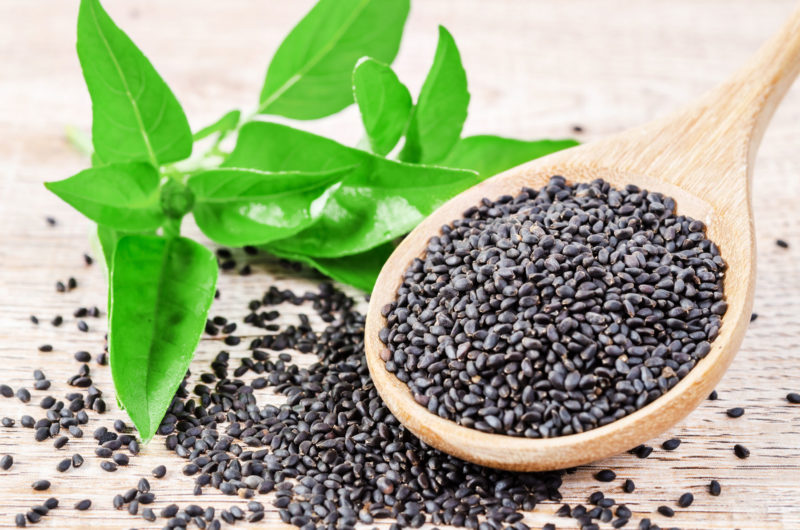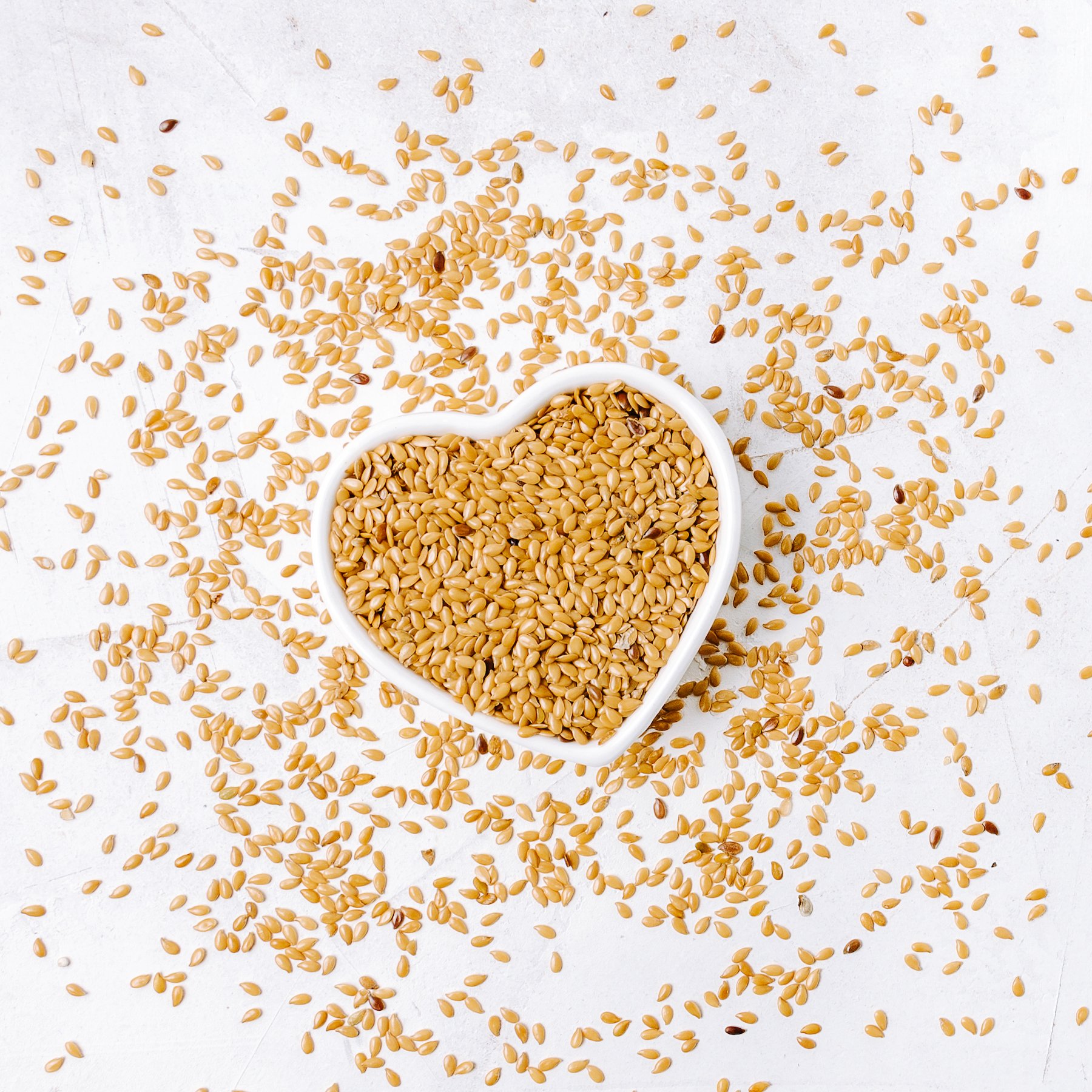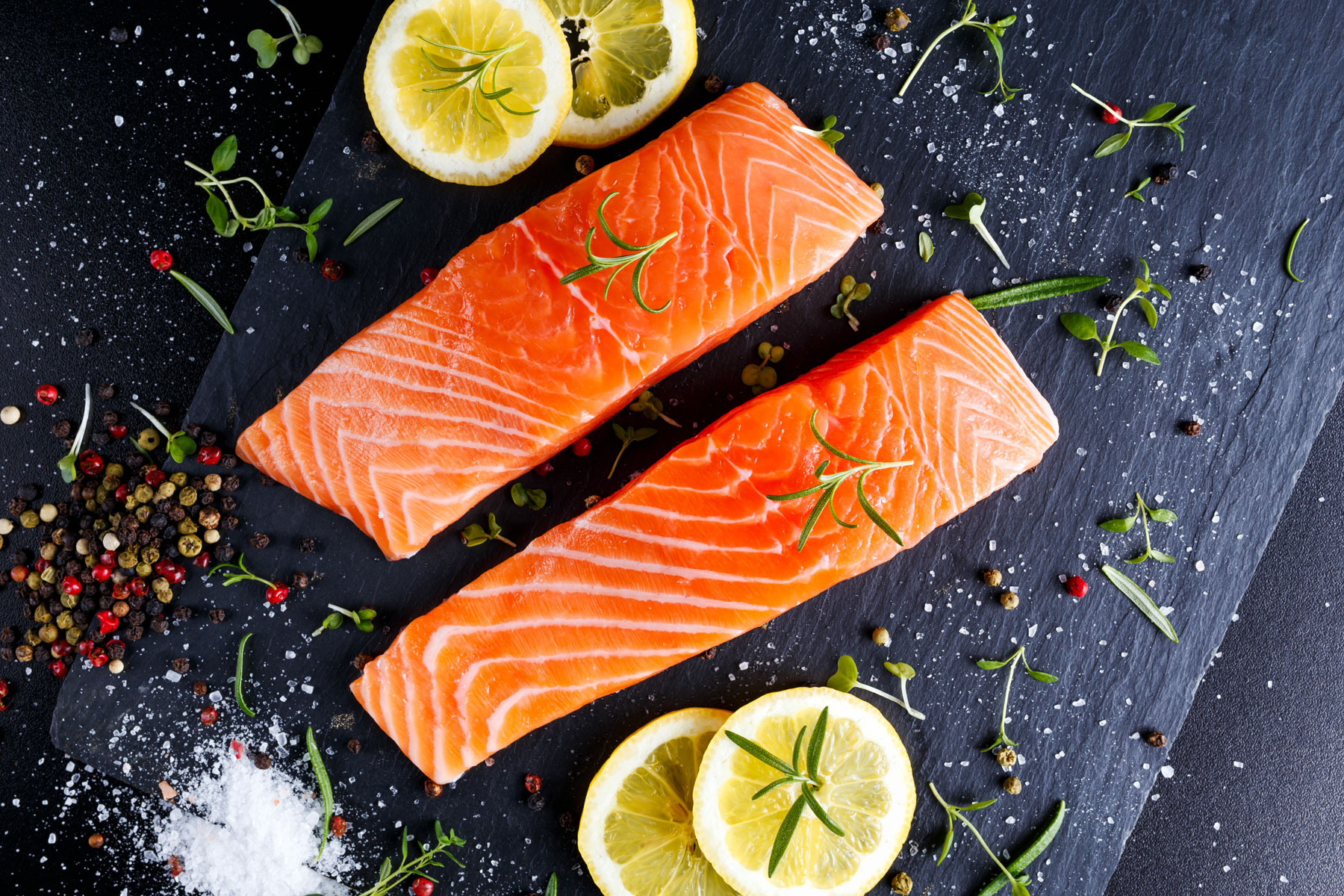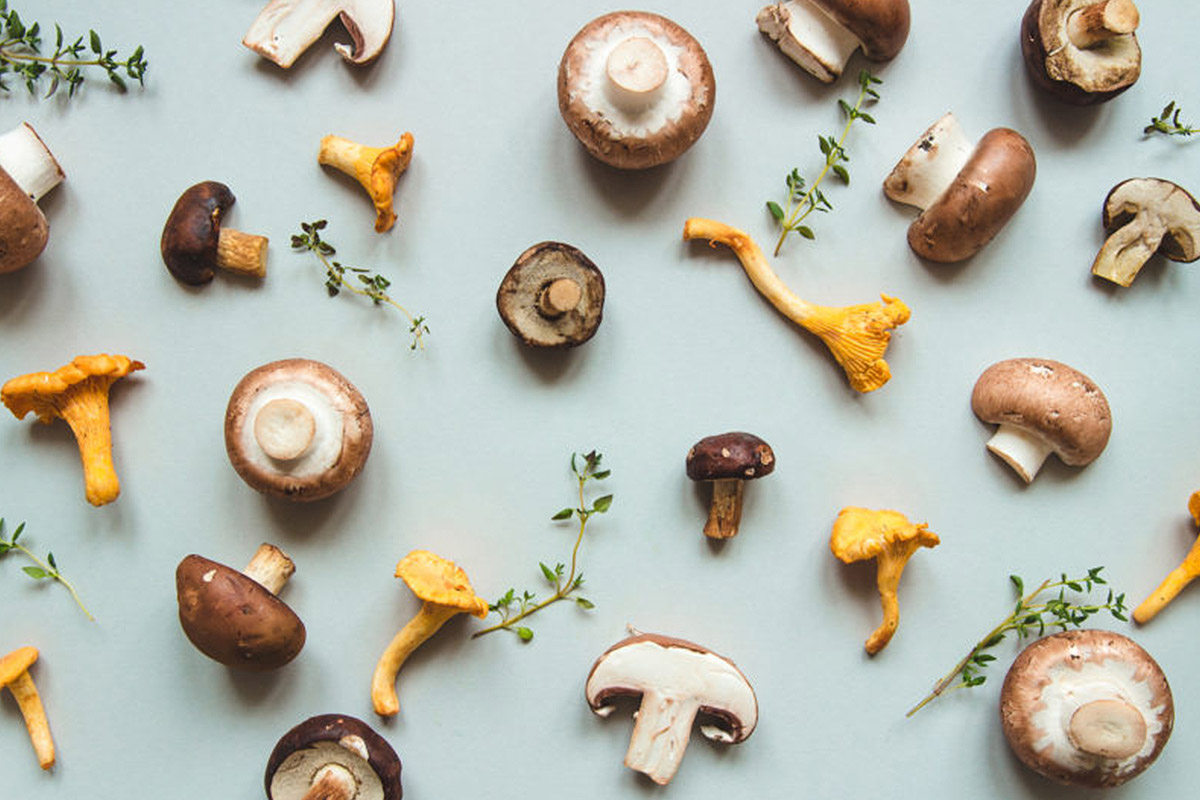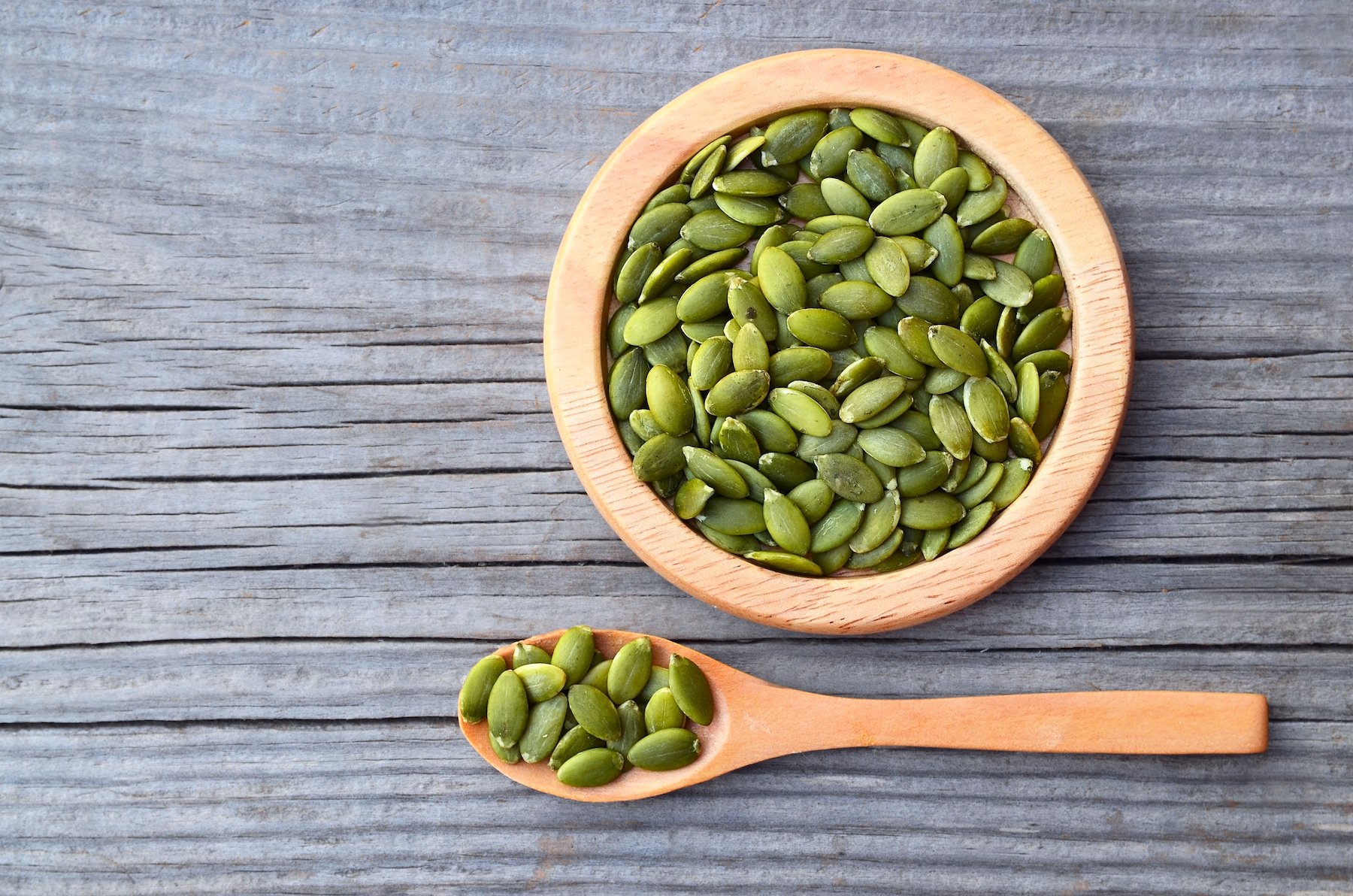You’ve probably used aromatic basil leaves in many recipes—pestos, curries, sauces—but basil seeds also deserve attention. The benefits of basil seeds are many. Small but mighty, these seeds are a good source of metabolic-friendly nutrients such as fiber, omega-3 fatty acids, and various minerals. Like chia seeds, these tiny black seeds from the sweet basil plant (ocimum basilicum), which resemble sesame seeds, swell up and develop a gel-like mucilage coating when combined with liquid, lending a unique, chewy-crunchy texture to recipes (think: basil seed pudding, drinks, oatmeal, and more).
Until recently, basil seeds (a.k.a. sabja seeds, tukmaria seeds, or sweet basil seeds) have predominantly been used as an ingredient in Middle Eastern, Southeast Asian, and Indian dishes, as well as in Ayurvedic and Chinese medicine. For example, Thailand’s nam manglak, a refreshing drink that typically features basil seeds, water, rose water or syrup, and honey; or the dessert falooda, which is common in India. But thanks to increased availability and knowledge about their nutritional value and how they can promote overall well-being, basil seeds are gaining popularity as a healthy kitchen staple around the globe.
There are several basil varieties—Thai basil, holy basil (a.k.a. tulsi), Italian basil, large-leaf Genovese basil—that produce edible seeds, but the basil seeds used in cooking are usually those of the sweet basil plant (whose dark green basil leaves you’ll find at the grocery store).
Every two-tablespoon serving of basil seeds provides 130 calories and a well-rounded lineup of macronutrients and micronutrients, including 15 grams of dietary fiber, 5 grams of satiating protein, 6 grams of fat (mainly alpha-linolenic acid, or ALA, a plant-based omega-3), and 20% or more of the recommended dietary allowance (RDA) for magnesium, calcium, and iron, which play essential roles in blood glucose regulation, healthy insulin response, and preventing fatigue.
Basil seeds have a mild, subtly herbaceous flavor that lends itself to sweet and savory dishes. And it’s their versatility, coupled with their nutrient density, that makes basil seeds an incredibly convenient and impactful way to support metabolic health.
The Benefits of Basil Seeds: Their Metabolic Punch
One of the standout health benefits of basil seeds is their high fiber content—15 grams per two-tablespoon serving (or around 39% and 60% of the recommended daily intake for men and women, respectively), which is more than chia seeds. Most fiber passes through the gastrointestinal tract intact and delays gastric emptying (the rate at which food passes from the stomach to the intestines), which can promote feelings of fullness, help reduce cravings, and slow glucose absorption into the bloodstream, thereby helping blunt blood sugar spikes after a meal. (Basil seeds also contain minimal net carbohydrates.) This may be one reason why high-fiber diets are associated with lower markers of insulin resistance, fasting plasma glucose, HbA1c (a measure of average blood sugar levels over three months), and body weight compared with low-fiber diets.
Fiber is also vital for gut health, and serves as fuel for gut bacteria, which break fiber down into beneficial byproducts called short-chain fatty acids (SCFAs). These SCFAs, such as butyrate and propionate, may offer a host of unique digestive health perks, from maintaining a healthy gut barrier (which can support metabolic health by keeping inflammation in check) to stimulating the release of gut hormones (PYY and GLP-1) that curb food intake. The fact that basil seeds expand when they absorb liquid could further bolster their appetite-suppressing effects and increase satiety.
But while fiber is excellent, basil seeds are far from a one-trick pony. They are also rich in the essential omega-3 fatty acid ALA, which has been associated with reductions in total and LDL cholesterol levels, blood pressure, inflammatory biomarkers, arterial plaque buildup, and heart disease, along with improved endothelial or blood vessel function—all of which support overall health and wellness. While exact ALA content may vary depending on where basil seeds are grown, most studies estimate that ALA represents anywhere from 16%-65% of basil seeds’ total fatty acid content. What does this mean? Given that there are six grams of total fat in two tablespoons of basil seeds, you can expect anywhere from 960 to 3,900 milligrams (mg) per serving. Either end of this range puts you well toward the recommended 1,100-1,600 mg of ALA per day.
A serving of basil seeds also delivers meaningful levels of several micronutrients, including magnesium (21%-29% of the RDA), calcium (37% of the RDA), and iron (26%-59% of the RDA). Magnesium has been associated with reduced risk of metabolic syndrome and Type 2 diabetes, which some researchers believe may be explained by the mineral’s anti-inflammatory properties and beneficial effects on insulin resistance. Appropriate calcium levels (i.e., not too high, not too low) appear to play a role in healthy insulin response. And iron is a crucial component of hemoglobin, which transports oxygen to all the body’s tissues, combating fatigue and helping ensure you have the fuel necessary to maintain your desired levels of physical activity. Finally, basil seeds contain various polyphenols as well as antioxidant properties and compounds, such as rosmarinic acid.
Basil Seed Buying Advice
Basil seeds are still new as a culinary ingredient in many parts of the world, so you may not find them at your local grocery store, but they’re easy to find online. One of the best-known American brands of basil seeds is Zen Basil, whose USDA-certified organic seeds are available on its website, Amazon, and Walmart. You may also find other brands of basil seeds at those online retailers as well as specialty Indian or Southeast Asian grocery stores, where they’re often labeled as sabja or tukmaria seeds.
Tips for Using Basil Seeds
Given the many similarities between basil seeds and chia seeds, many of the same storage and prep tips apply. Here are a few tips to keep in mind:
- Basil seeds should be stored at room temperature in an airtight container (or the original zip-top packaging they came in), ideally in a cool, dark place to minimize oxidation of their beneficial oils. Refrigeration is only required once the seeds are hydrated.
- You can enjoy basil seeds raw (think: sprinkled onto salads, stir-fries, or yogurt) or hydrated (say, in basil seed pudding or a smoothie). While you’ll still reap the nutritional benefits from consuming the dry seeds, the potential upside of consuming hydrated basil seeds is that they expand and become viscous, which could promote feelings of fullness.
- If you eat basil seeds raw, always have them with food, so they move through your body smoothly without potentially clumping and causing a blockage. (This isn’t common, but it has been documented in one case report of a man who ate a spoonful of chia seeds.)
- To hydrate basil seeds, Zen Basil Seeds advises 1 tablespoon of basil seeds to ½ cup of liquid such as water, tea, nut milk, or juice. Hot liquid hydrates basil seeds in one minute, room temperature liquid takes 3-5 minutes, and cold liquid takes about 20 minutes.
- There’s no recommended intake or limit for basil seeds, but if your diet is low in fiber, add them gradually to avoid bloating and discomfort, and to allow your digestive system to adjust.
Ideas for Eating and Reaping the Health Benefits of Basil Seeds
Basil seeds are a great 1:1 replacement for chia seeds in any recipe (just keep in mind that basil seeds will bring an herbaceous note to food, compared to flavorless chia seeds). Here are some delicious ways to experiment and :
- Try basil seed pudding for a satisfying breakfast or blood sugar-friendly dessert. The basic formula: Whisk 2 tablespoons of basil seeds with ½-1 cup of your milk of choice and flavor boosters like vanilla, cocoa powder, and cinnamon. Refrigerate for a couple of hours, then finish with toppings like nuts and berries. (Pro tip: You can turn any chia seed pudding recipe into basil seed pudding since the seed-to-liquid ratios are the same.)
- Boost beverages with basil seeds. If plain water is a bit boring, stir a spoonful of basil seeds into basically any drink (think: water with a squeeze of citrus, unsweetened herbal teas, seltzer with fruit slices, coconut water) for a more satisfying sipper that can double as a snack.
- Make an extra thick and creamy smoothie or milkshake. Add a spoonful of basil seeds to the blender with your other ingredients, or pre-soak seeds in water and stir them into your smoothie as the final step for a texture similar to bubble tea.
- For a satisfying salad dressing that’s still surprisingly light, combine basil seeds with ingredients like olive oil, vinegar, mustard, garlic, and a touch of honey. This dressing will thicken as it sits, which helps it clings to leafy greens, so every bite is satisfying.
- Sprinkle raw basil seeds onto salads, pastas, stir-fries, tacos, baked sweet potatoes, oatmeal—anywhere you want a bit more fiber, healthy fats, and texture.
- To bulk up both creamy soups and broth-based soups, stir in a tablespoon of basil seeds and watch the consistency thicken. For creamy soups, you can also use an immersion blender after adding the basil seeds for a more uniform texture. Top with basil microgreens for additional micronutrients and flavor.
- Make individual seed travel packs with basil seeds, chia seeds, and ground flax so you can add a dose of fiber, micronutrients, and flavonoids to any meal when you’re on the go.
